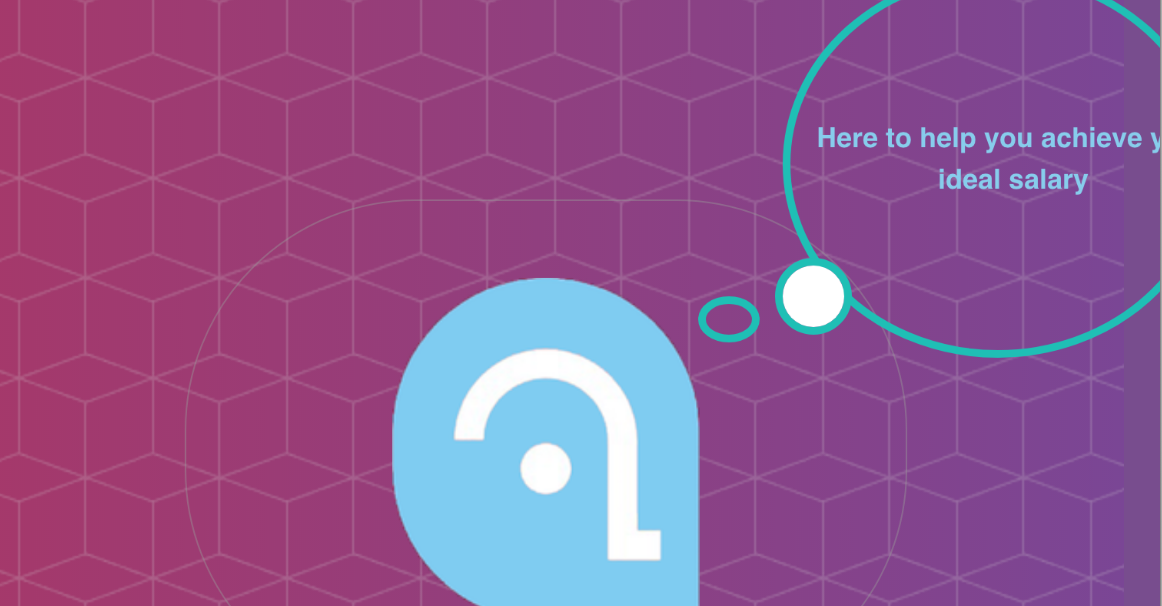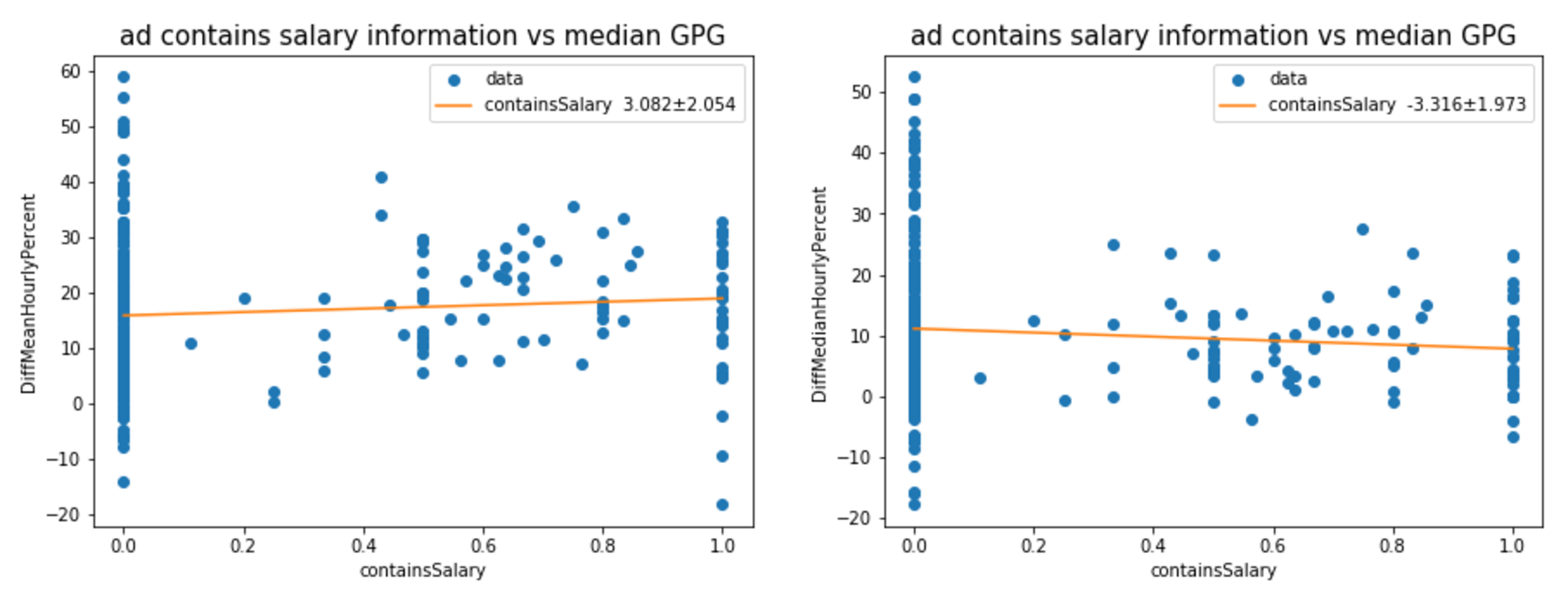Gender Pay Gap Hack: June 2018
Do companies who use diversity language in their advertisements really put their money where their mouth is? Is the charity sector more egalitarian than corporations? Which parliamentary constituencies headquarter the companies with the biggest gender pay gaps? These are just a few of the questions we were able to look at during our Gender Pay Gap Hack event on 22 and 23 June.
Logo design by Ola Sendecka.
What We Did
Partnering with the AI Club for Gender Minorities and codebar, hosted at BuzzFeed’s London office by their wonderful tech team and with a never-before-publicly-researched dataset from Indeed, it’s astounding what a small but dedicated core of volunteers can accomplish in a short time. We used the UK’s mandated gender pay reporting along with other open data sets to examine factors related to the gender pay gap. What we learned was truly thought-provoking.
A Chance to Shine
We had over 50 volunteers overall including very talented folks who worked to prepare data sets in advance even though they couldn’t join us during the event itself. Several participants were first-timers at this kind of event and we had at least two participants make their very first pull requests to a GitHub repo as a result of their participation. Not only were our volunteers able to produce fantastic new insights into the gender pay gap, they were also able to push themselves and learn new skills which they can now use as part of their professional portfolios. With a volunteer corps of primarily underrepresented minorities, this is a great opportunity to increase diversity in the tech industry overall by showcasing the skills of underrepresented folks. All the code produced during the event is open-source and available in our GitHub repo for anyone to build and expand on the work our volunteers accomplished so far.
A few highlights of findings that emerged during the event:
A few of our volunteers working at Buzzfeed's office.
Visualisation by volunteer Vicky Butt.
The Charities Team
One team focused specifically on examining the charity sector.
The gender pay gap is present in charities just like other employers. Having a higher proportion of women on a charity board appears to increase gender pay equality for the charity. Volunteer Vicky Butt was able to visualise this.
While the team weren’t able to fully verify this finding, volunteer Sarah Rae found that it is possible that larger, wealthier charities have larger gender pay gaps than smaller ones. This raises interesting questions about how organisational structures of power are gendered, no matter the sector.
Take a look at this nifty interactive map of the gender pay gap across the UK by volunteer Emma Vestesson! Mighty impressive for a first-time hackathon participant.
The Chatbot Team
Another team, focusing on how to help push for equal pay, drafted a working model of an interactive chatbot designed to help users negotiate better salaries. Try a demo, and watch the team’s fun end-of-event presentation.
HaggleBotty: the chatbot to help you achieve equal pay.
Volunteers presenting findings on the pay gap.
The Companies House Team
Working with publicly available information from Companies House, one team used a gender-name-mapping program to determine company directors’ genders. From this they found:
There are 4X as many men directing companies as there are women. It would be great to see this work carried further to test the relationship between directorship gender and the pay gap in a company.
This team also found that the pay gap widens at the highest levels of seniority. Not only are women finding it harder to achieve leadership positions, but even when they get to the highest levels, women are not paid as much as their male counterparts.
The Indeed Team
During the initial research, the team working with data from leading job site Indeed.com found that when job ads for leadership positions omit salary information, the median gender pay gap is typically 7.2% worse. Interestingly, whether or not salary information is present in an ad doesn’t seem to have a relationship with the pay gap at other levels.
In more positive news, the Indeed team found that the companies they analysed whose job descriptions included equal opportunity phrases had a statistically significant lower percentage difference in mean hourly pay, meaning that looking for companies where this language is used is more likely to land you a job where your wage is the same as your coworkers’ no matter what your gender is.
Visualisation of the salary information findings by volunteer Gordon Blackadder.
Indeed team volunteers making discoveries.
The organisers.
Learning & Improvement for the Hosts
Partnering with the AI Club for Gender Minorities and codebar, hosted at Buzzfeed and with a never-before-researched dataset from Indeed, when we look at the photos of all our talented data scientists working away the thing that amazes us most of all is that we arranged everything in such a short time: we first discussed the idea with the AI Club and codebar at the Ellpha launch on 19 April. Somehow in that very short space of time, we found a venue, motivated an excited community, prepared data, and did all the logistical arrangements for the day. We at Ellpha are absolutely humbled by the commitment and dedication of everyone involved in making this happen.
But there is still more we can do, and as an organisation committed to furthering gender equality we must continue to push ourselves as well as using these amazing results to push others. We could do better at intersectionality: nonbinary folks aren't represented among the data sets we used. A recent Harris poll in the United States showed that 12% of 18-34 year olds do not fall into traditional binary gender roles and there is some research showing this is a global trend away from those identities. How do we encourage analysis that is inclusive of all gender minorities, not just women? Further, the gender pay gap reporting is a great start, but there is limited data about wage gaps by race & among other underrepresented groups. We have a responsibility to demand equality for all.
thank you!
Finally, thanks to the hard work of our wonderful volunteers we have several rich data sets we didn't use to their full potential, including the text data for all the individual company reports which were a required part of the gender pay gap reporting, and a large set of tweets with hashtags related to the gender pay gap. The work is only beginning, and we'd welcome ongoing engagements with this data. If you’d like to help, please reach out to us at genderpaygaphack2018@gmail.com to discuss it further with us.
Stay tuned...
We are planning a follow-up event in October to share and findings in more depth so even if you couldn’t join us on the day, you can still be part of the conversation. Keep an eye out for more information on our October event where we’ll continue to push for equal pay!








